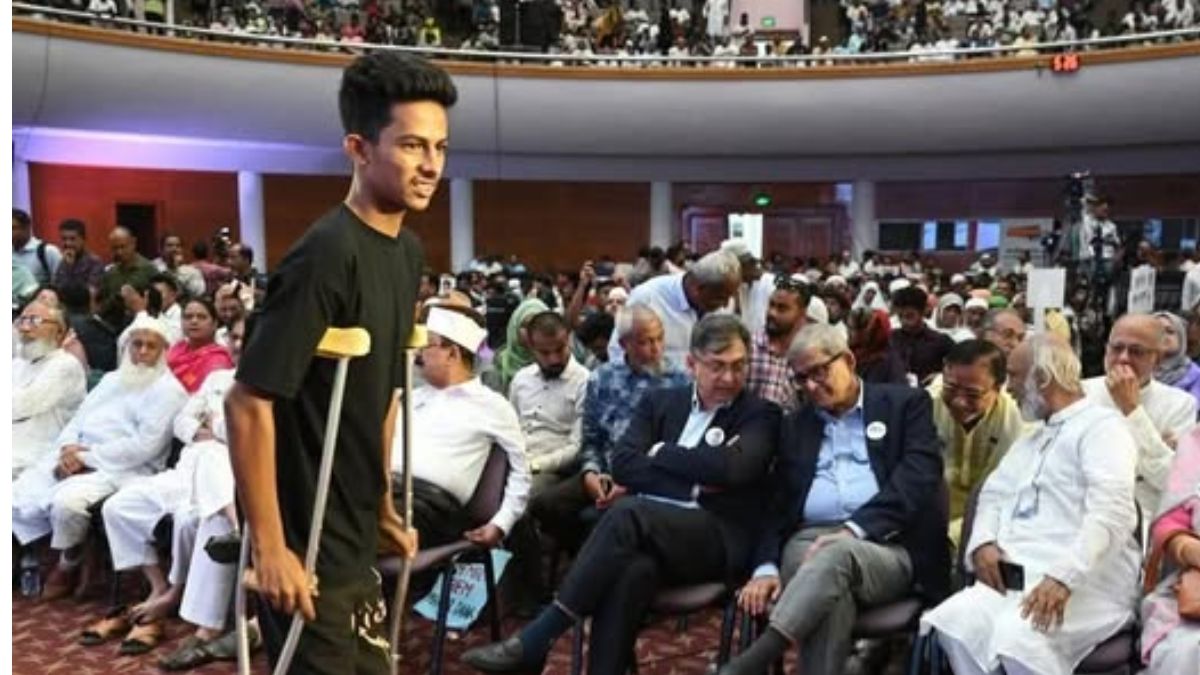As the COVID-19 pandemic continues to evolve, masks remain a cornerstone of protection, especially in Bangladesh, where crowded markets and public transport amplify risks. A persistent question on social media and in daily conversations is: how effective are cloth masks, particularly with new SARS-CoV-2 variants circulating? Once a niche tool for dust or medical use, masks became a global essential after 2020, blocking tiny respiratory droplets from sneezes, coughs, or conversations. But with guidelines shifting and countries like France banning certain cloth masks, we, a team that’s navigated our share of health myths (yes, we once bought into “herbal COVID cures”), decided to fact-check the effectiveness of cloth masks in 2025. Let’s dive in with a wry smile and global rigor to separate fact from confusion.
The Claim: Cloth Masks Are Losing Their Edge
Cloth masks, widely used in Bangladesh due to affordability and availability, are under scrutiny. Social media posts and local chatter suggest they may not protect against new, more transmissible SARS-CoV-2 variants, like those identified in the UK and South Africa. Some claim surgical masks or FFP2/N95 masks are now the only safe options, pointing to bans in France and mandates in Germany. In Bangladesh, where cloth masks are sold everywhere from roadside stalls to supermarkets, this has sparked confusion. Are our trusty cotton masks still up to the task, or are we risking it all?
Fact-Checking Cloth Mask Effectiveness
To unravel this, we consulted guidelines from the World Health Organization (WHO) and Centers for Disease Control and Prevention (CDC), alongside expert insights. Here’s what we found:
- WHO Guidelines: The WHO recommends medical masks (surgical or N95) for high-risk groups: healthcare workers, those with COVID-19 symptoms or positive tests, people over 60, and those with chronic conditions like diabetes or heart disease. For healthy individuals under 60, non-medical cloth masks are still advised, provided they meet specific criteria (more on this below).
- CDC Standards: The CDC emphasizes that cloth masks can be effective if they have multiple layers (at least two or three), fit snugly over the nose and mouth, and are made of tightly woven materials like cotton. They warn against single-layer masks, loosely fitting ones, or materials like plastic that restrict breathing.
- New Variants: The emergence of variants like B.1.1.7 (UK) and B.1.351 (South Africa) in 2021 raised concerns due to higher transmissibility. A 2023 Lancet study found that well-fitted cloth masks with multiple layers still reduce transmission by 50-70% for most variants, though surgical masks (90-95%) and N95/FFP2 masks (94-98%) perform better, especially in high-risk settings.
- Global Policies: France banned homemade and low-quality cloth masks in January 2021, mandating surgical masks or “Category 1” fabric masks that block 95% of 3-micrometer droplets. Germany and Austria mandated FFP2 masks in public spaces like supermarkets, citing better filtration. London’s mayor explored similar rules in 2021, reflecting variant-driven caution.
- Expert Insights: We consulted Dr. Jean-Francois Delfraissy, chair of France’s scientific committee, via a 2021 France24 interview. He noted that new variants “changed the game,” requiring higher filtration. However, a WHO spokesperson told BMJ in December 2020 that three-layer cloth masks remain effective for the general public if made correctly: an inner absorbent layer (cotton), a middle filter layer (non-woven polypropylene), and an outer non-absorbent layer (polyester).
What Makes a Cloth Mask Effective?
The WHO and CDC outline clear criteria for safe cloth masks:
- Layers: At least two or three layers, ideally with a filter pocket for added protection.
- Material: Tightly woven fabrics like cotton for breathability; avoid materials like plastic or leather that hinder airflow or loosely woven fabrics that let light pass through.
- Fit: Must cover nose and mouth snugly, with no gaps around the edges.
- Filtration: A middle layer of non-woven polypropylene boosts filtering capacity.
Single-layer masks or those with ventilation holes (e.g., some fashion masks) are ineffective, as are loosely fitting ones that leave gaps. In Bangladesh, where many use homemade or market-bought cloth masks, checking for these features is crucial. Holding a mask up to light—if you can see through it, it’s too thin.
The Bigger Picture: Masks in a Variant-Driven World
The debate over cloth masks reflects broader challenges in public health communication. New variants, as noted in a 2023 Nature study, demand higher filtration, but cloth masks aren’t obsolete for low-risk settings. The World Association of News Publishers warned in 2023 that inconsistent messaging fuels distrust, and in Bangladesh, where vaccine hesitancy lingers, unclear mask guidance can erode confidence.
Social media amplifies this, with platforms like Facebook boosting sensational posts, per a 2022 Stanford study. In Bangladesh, where masks are both a health tool and a cultural norm, ensuring access to accurate information is as vital as the masks themselves.
Conclusion: Cloth Masks Work, If Done Right
Cloth masks remain effective for healthy individuals under 60 in low-risk settings, per WHO and CDC guidelines, but they must have multiple layers, a snug fit, and proper materials like cotton and polypropylene. New variants have pushed countries like France and Germany toward surgical or FFP2 masks, but cloth masks still offer 50-70% protection when made correctly. In Bangladesh, where cloth masks are widely used, check for three layers and a tight fit—avoid single-layer or see-through fabrics.



